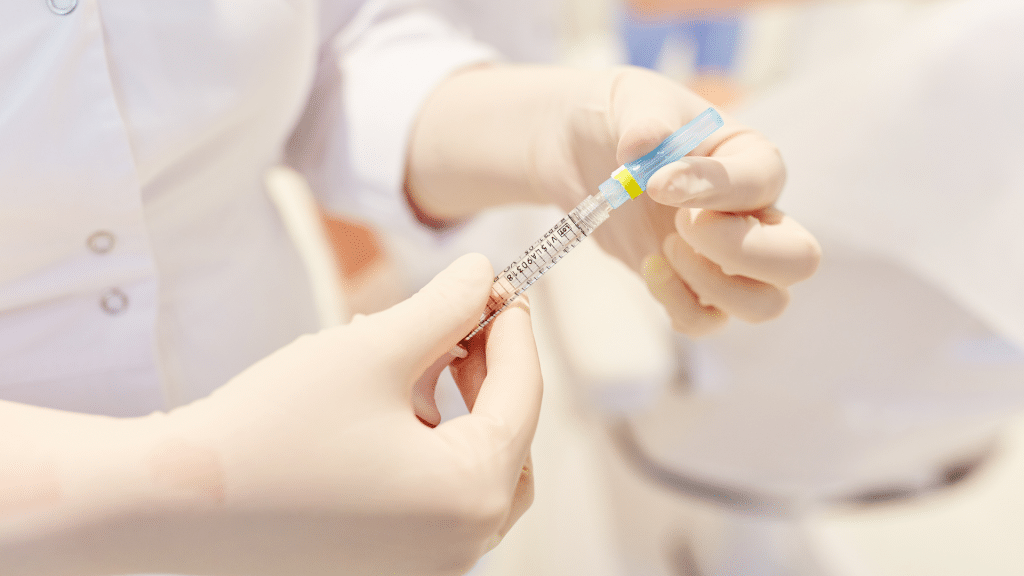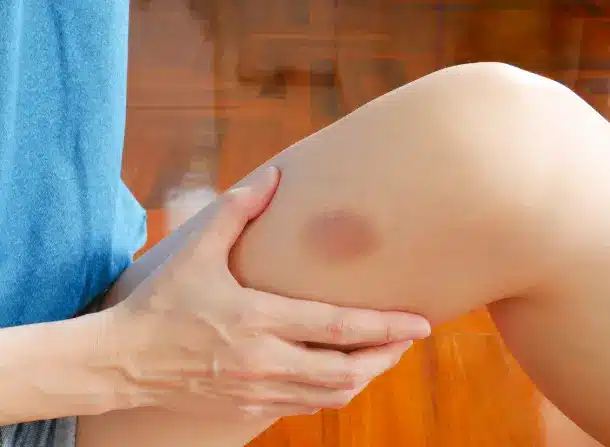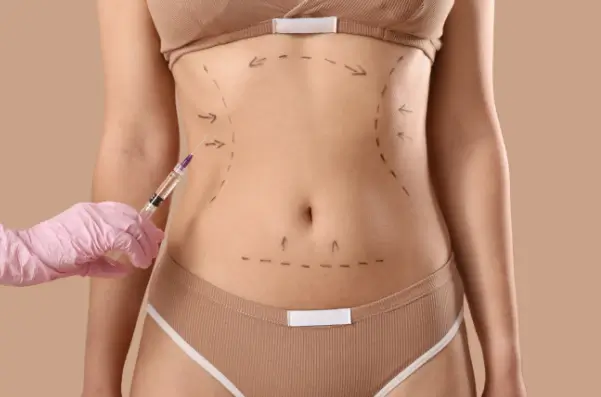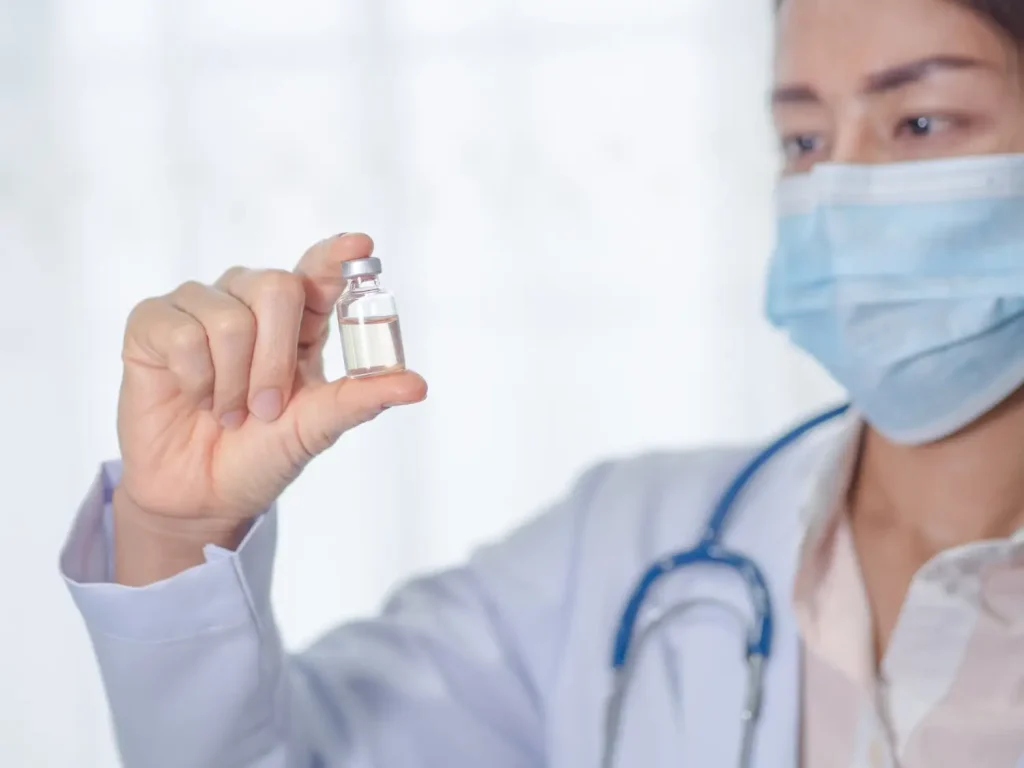According to Harvard Health, dermal fillers can smooth lines and restore volume but may also lead to complications such as skin eruptions, asymmetry, and more severe conditions. Understanding these risks is crucial for anyone considering dermal filler treatments.
Radiesse is a widely used dermal filler that offers unique facial contouring and wrinkle reduction benefits. Its calcium hydroxylapatite composition provides immediate volume and stimulates collagen production over time. However, like any medical procedure, it’s essential to be aware of possible side effects to manage risks effectively.
In this article, we will explore Radiesse’s side effects and provide practical tips on avoiding them to help potential users and healthcare professionals make informed decisions.
Key Takeaways
- Radiesse is a popular dermal filler to enhance facial features and rejuvenate the skin.
- While it is generally safe and effective, there are potential side effects and complications that medical professionals should be aware of.
- Understanding and mitigating these side effects is crucial for patient safety and satisfaction.
About: Medical Spa RX provides premium products at the best prices for medical practices. If you want to buy Radiesse for your practice, the sales representatives at Medical Spa RX can guide you.
Common Side Effects of Radiesse Injections

Bruising and swelling are often expected after Radiesse injections, especially if a larger amount of the filler is used. This is the body’s natural response to the treatment, causing the area to become puffy, red, and tender. Such effects typically begin immediately after the injection and can last a few days, gradually subsiding as the body heals.
After the initial swelling, some patients might experience another side effect—nodules. Approximately 12% of individuals who receive Radiesse injections may feel hard spots or lumps under their skin, particularly on the back of the hand.
These nodules can persist for an extended period, sometimes lasting up to a year. Awareness of this possibility is crucial for doctors and patients to avoid unnecessary concerns during follow-up checks.
Rare Complications and Adverse Reactions

Sometimes, Radiesse injections can lead to less common complications. These serious issues need quick attention to keep patients safe.
- Vascular Occlusion: To avoid this, doctors must be cautious during the injection. They should know where not to inject so they don’t hit an artery by mistake. If Vascular Occlusion does happen, managing it quickly and correctly is critical to stopping more severe problems like tissue injury or necrosis.
- Infections: Infections after Radiesse injections are rare but can happen. They might show up as delayed-onset inflammation at the treatment site, often following a viral or bacterial illness. This means that even if an infection does not initially seem related to the injection, it may still be traced back.
- Allergic Reactions: Allergic reactions to Radiesse can manifest in different ways. Some people might experience late allergic responses, while others may experience chronic inflammation or infection. These issues sometimes lead to more significant problems, such as granulomas, filler moving to places it shouldn’t, loss of function in the area treated, blood vessels showing more than expected (telangiectasia), and hypertrophic reactions.
Best Practices for Injection Techniques

- Proper Injection Depth: Proper injection depth is crucial for safety and good results with Radiesse. It’s not just about avoiding side effects; it’s also about ensuring the treatment works as intended. Experts agree that knowing where to inject—deep under the skin or closer to the surface—makes a big difference.
- Correct Injection Volume: Choosing the right amount comes from knowing each product’s side effect profiles well. For Radiesse, this means understanding that more enormous volumes could raise bruising risks. So, sticking to recommended volumes ensures safety and improves patient satisfaction with their outcomes.
- Avoiding Superficial Injections: To avoid superficial injections, focus on the proper depth for Radiesse fillers. This is crucial because it helps prevent nodules and an uneven skin surface. It’s all about precision—placing the filler right to make sure it works as intended without causing bumps or lumps that nobody wants.
Patient Assessment for Minimizing Risks
Evaluating a patient’s medical history is critical to lowering risks with Radiesse injections. Doctors must look for uncontrolled immune problems like graft versus host disease, chronic urticaria, and Quincke’s edema.
Moreover, checking if the patient has multiple severe allergies before proceeding with any procedure is vital. This evaluation can also open conversations about comparing treatments like Radiesse and Restylane, helping the patient decide which better aligns with their aesthetic goals.
Doctors can also assess a prospective patient’s skin sensitivity and use this information to pick the safest way to give the shots. Knowing about any allergies or sensitive skin helps avoid problems later on. By paying close attention, doctors can lower risks and keep patients feeling great about their choice to get Radiesse injections.
Post-Treatment Care to Minimize Side Effects
When discussing Radiesse’s side effects, doctors always mention that applying a cold compress can significantly reduce swelling and bruising from treatments. Think ice packs—they’re your go-to before and right after the procedure to keep those unwanted side effects at bay.
After using cold compresses, another critical step is to stay out of the sun. Sun exposure can make swelling and redness worse after Radiesse injections. For 24 hours, try not to go into the sun or heat too much.
Scheduling follow-up appointments is vital to monitoring recovery. Doctors often schedule these two to three months after the first treatment, which helps them spot any issues early.
Managing and Preventing Adverse Effects
Spotting early signs of complications is vital. Medical professionals should look out for unexpected swelling, intense pain, or changes in skin color at the injection site. These could signal major issues like vascular occlusion or infection.
Treating complications from Radiesse injections needs quick and intelligent actions. If a patient shows early signs of vascular occlusion, the key is immediate intervention—injecting hyaluronidase can help reverse the filler’s effects and restore blood flow.
Educating patients on the risks associated with Radiesse injections is crucial. Clear conversations about possible complications help manage and prevent adverse effects. This involves ensuring patients understand they might experience swelling, redness, pain, bruising, or itching.
Conclusion
Radiesse is a valuable tool for facial rejuvenation, but medical professionals must be well-versed in the potential side effects and complications associated with its use. By adhering to best practices for injection techniques, conducting thorough patient assessments, and providing comprehensive post-treatment care, healthcare providers can minimize the risk of adverse effects and ensure optimal patient outcomes.
Vigilance, preparedness, and patient education are critical elements in managing and preventing adverse effects, ultimately contributing to the safety and satisfaction of individuals seeking Radiesse treatments.
FAQs
1. What are the common side effects of Radiesse?
You might see swelling, redness, pain, or bruising where you got the shot.
2. Can Radiesse cause serious problems?
Though rare, it can lead to more significant issues like infection or lumps under your skin.
3. How long do these side effects last?
Most side effects from Radiesse can go away in a week or so.
4. Is there a way to lessen the side effects after getting Radiesse?
Sure thing – keep ice on it and avoid heavy workouts. It’s also crucial to follow aftercare instructions.
5. Should I tell my doctor about any side effects I experience after getting Radiesse?
Especially if things don’t get better or seem bad.
References
Liu, K. (2020, January 7). Dermal fillers: The good, the bad and the dangerous. Harvard Health Blog. https://www.health.harvard.edu/blog/dermal-fillers-the-good-the-bad-and-the-dangerous-201907152561
Healthline. (n.d.). Radiesse: Uses, side effects, and risks. Retrieved from https://www.healthline.com/health/radiesse
Lafaille, P., & Benedetto, A. (2010). Fillers: contraindications, side effects, and precautions. Journal of cutaneous and aesthetic surgery, 3(1), 16–19. https://doi.org/10.4103/0974-2077.63222





















